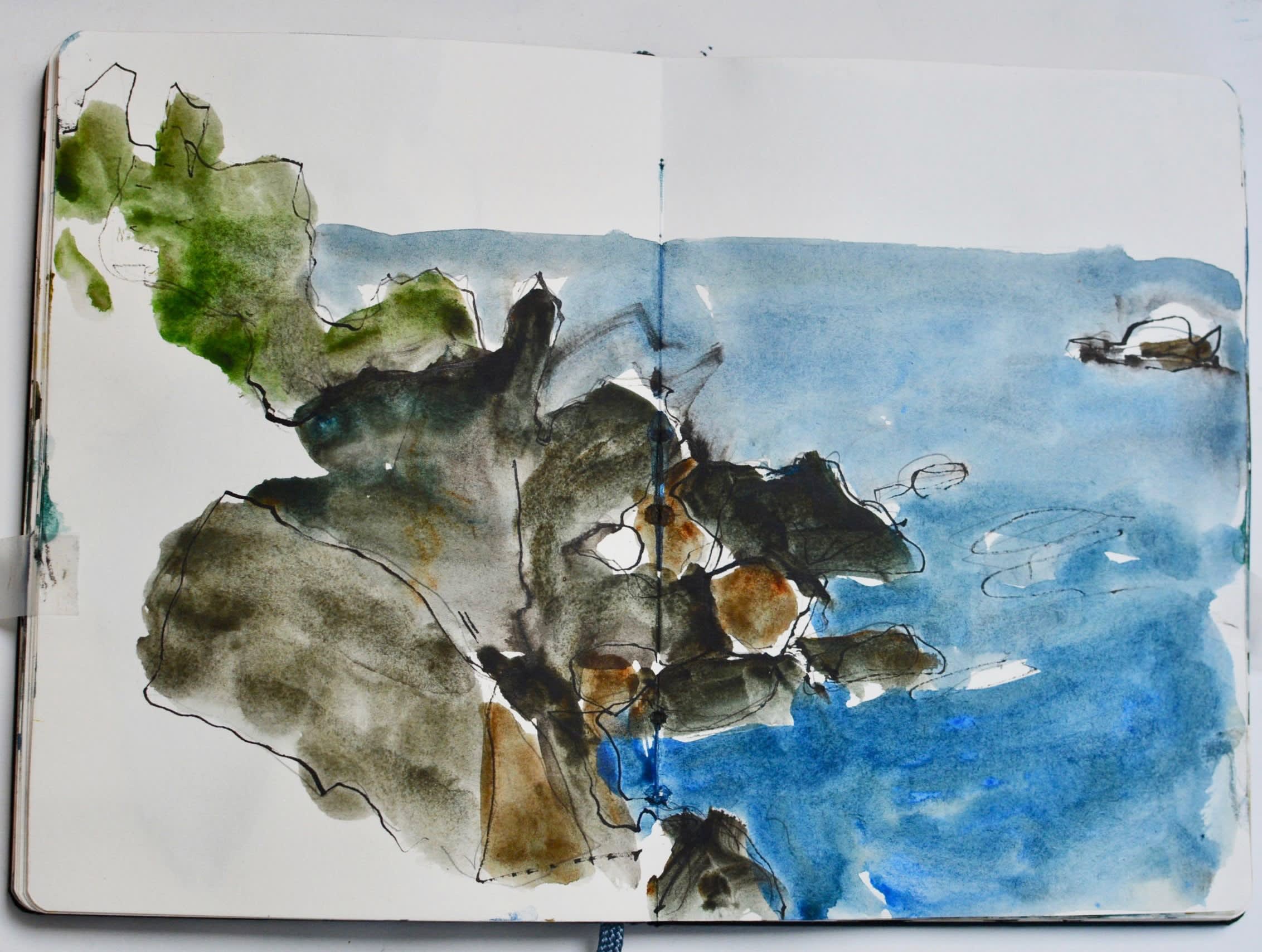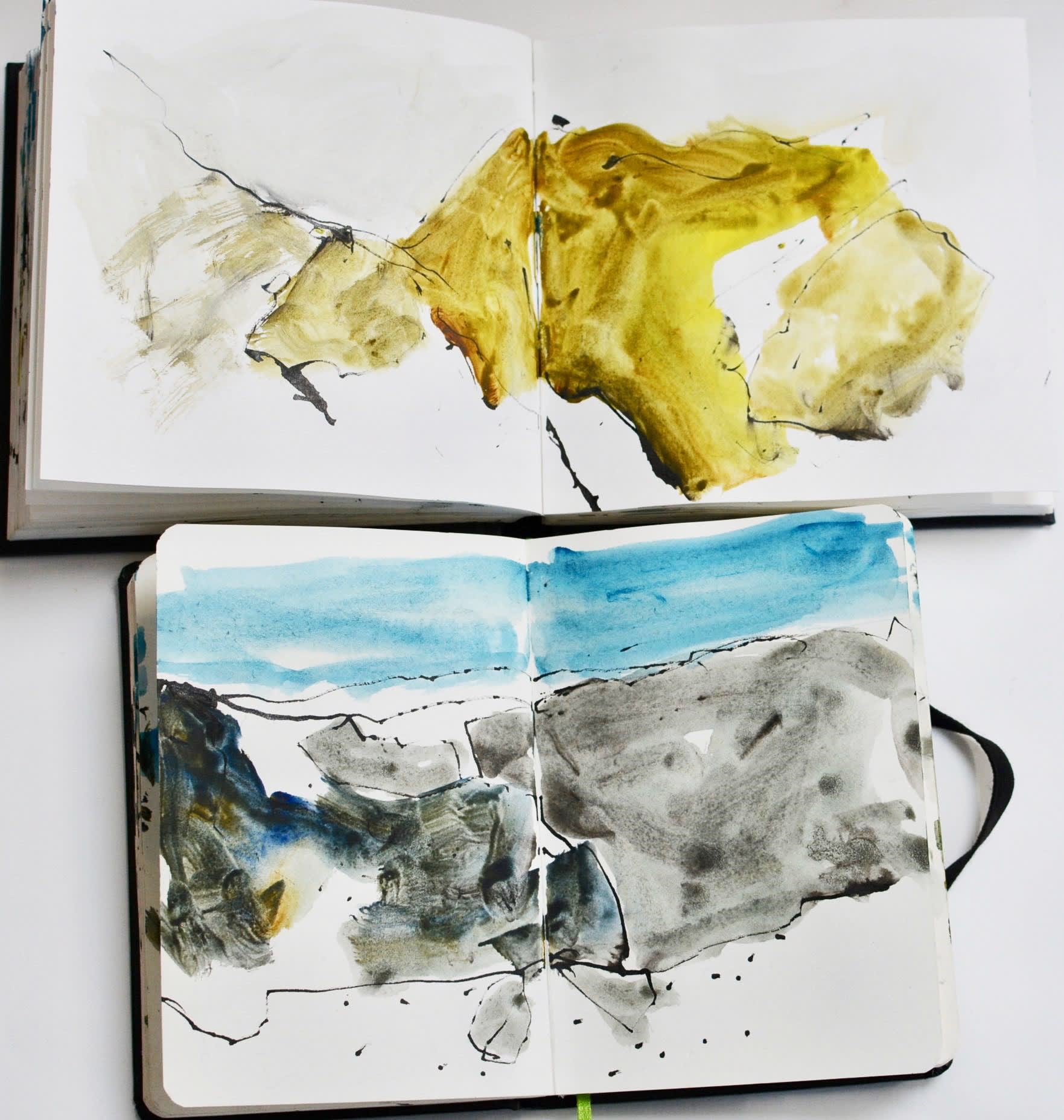For the second instalment in our Inside my Sketchbook series, we talk to Jim Hunter RWS to see how his abstracted painting collages begin.
Describe your working process from start to finish...
"My studio work starts, almost always, with reference to my sketchbooks so that my studio paintings are further developments of my direct responses to the landscape. In my sketchbooks I like to work outside in the landscape using watercolour with pencil and ink. I work rapidly making multiple drawings/paintings as I try to capture the sense of being in the landscape. Back in the studio the process and pace of working changes as the development of imagery from these studies becomes more protracted and considered. It is never a straight forward process transferring ideas and images from the sketchbooks to studio paintings: the immediacy and expressiveness of the outdoor studies can not be replicated inside the studio. I tend to work not from a single study but from several with a number of sketchbooks open on the studio floor."

How does the local landscape inspire your work?
"I can walk directly out from my studio and along the fields and paths of the Isle of Purbeck. With such ready access to this landscape, and living in it for many years, it is natural that it has become a dominant feature in my work. The cliffs and quarries are a recurring reference and lend themselves to more abstract interpretations."

Do you have any favourite tools (paper, brushes, paints, etc)?
"In my sketchbooks I work with half-pan artists quality watercolours in two metal paint boxes that I have used since my student days. Likewise I have two favourite sable brushes that I have used for many years. I often use indian ink to draw with using a dip-in pen but more often I will use any twigs that are at hand as improvised tools with ink. The quality of the paper is important but important for the variety that different papers can offer. In general I favour a NOT or HP surface but I am not fussy about this when working in sketchbooks as unexpected results can come from different surfaces."

What’s your advice to people wanting to use sketchbooks?
"Take advantage of, and enjoy, the freedom that sketchbooks allow you for experimenting and taking risks. Sketchbooks are personal and need only be shared with others if you wish. When out working in the landscape always do more rather than less: when you might think you have done enough force yourself to do another three or more as it is often these (or the very first one done) that have the most promise.
"To help me to avoid being over-precious about my efforts in a sketchbook, I work on both sides of the paper and across the two sides (meaning I can’t be tempted to take out any pages as a ‘finished’ painting). And I work to fill the sketchbook from cover to cover so that it becomes a book, a visual account of a particular place or period of time. For this reason I always use hardback sketchbooks."

How do you choose your colour palette for each piece?
"I choose my colours intuitively and in response to what I am looking at and experiencing. However, this may not necessarily be naturalistic colour but rather a choice of colours for expressive effect. Often a colour theme may persist through a number of works and then change to a quite different palette in response to changes in the light, weather or mood of the landscape."
Thank you, Jim!
Want to see more of Jim's work? Head to his page here.
More like this on the Blog...
Read: Abstract Art in 2020: Online Panel Discussion
Learn: Straight from the artist's mouth: A guide to water-based media
Read: QUIZ - Which water-based media is for you?
Read / Watch: Abstract Art: In the Studio with Lisa Traxler
Watch: In the Studio with Bridget Moore.
Watch: In the Studio with Denis Ryan.
Watch: In the Studio with James Faure Walker.

